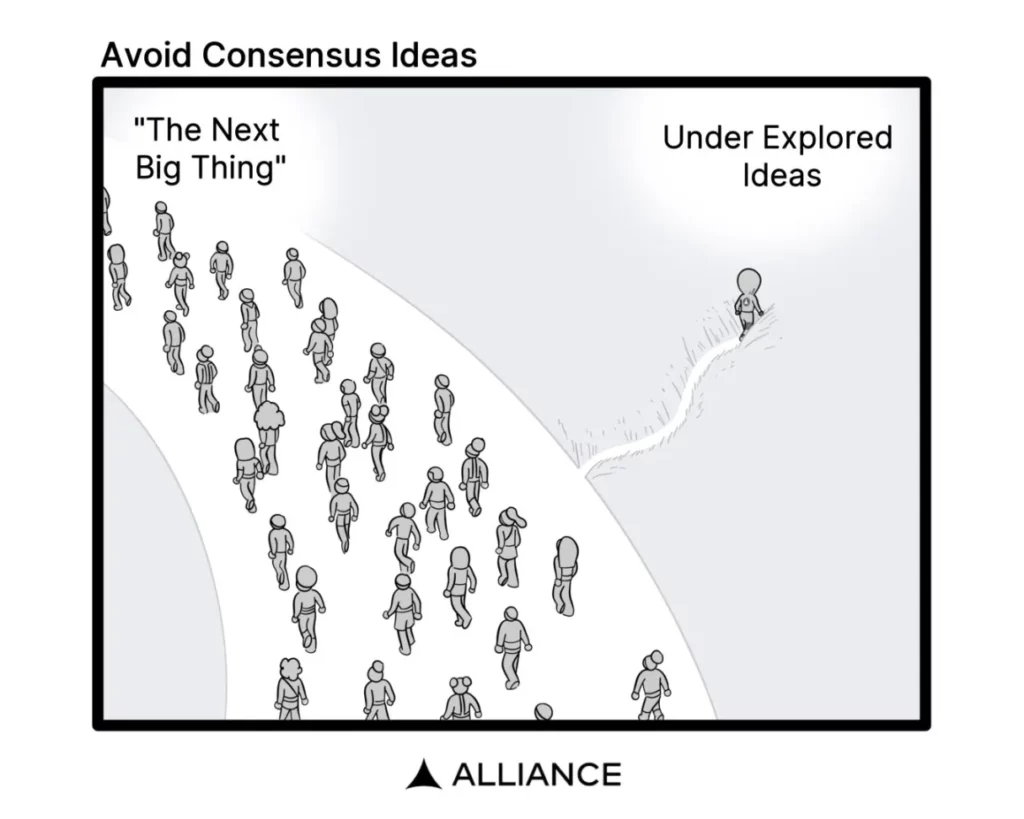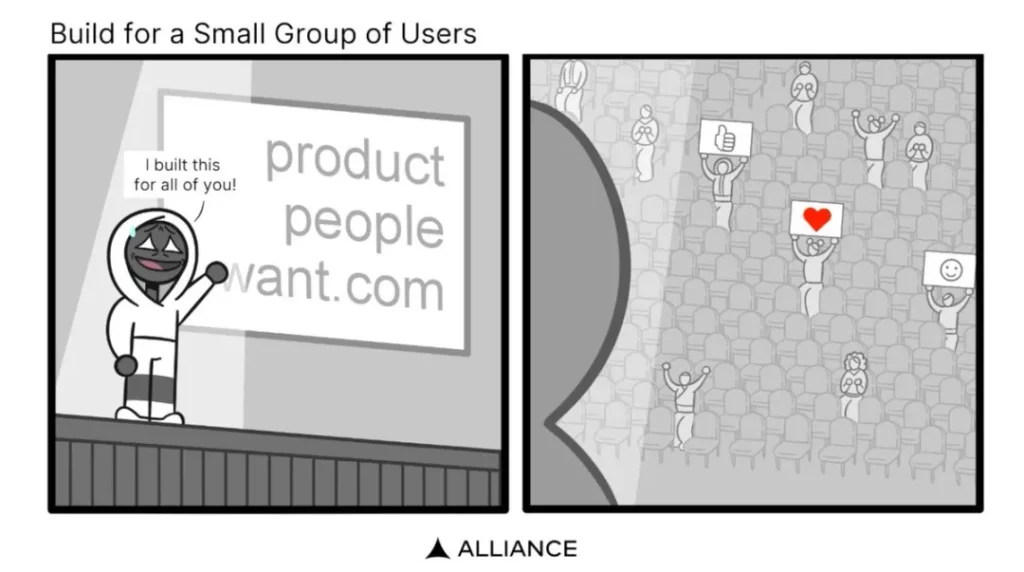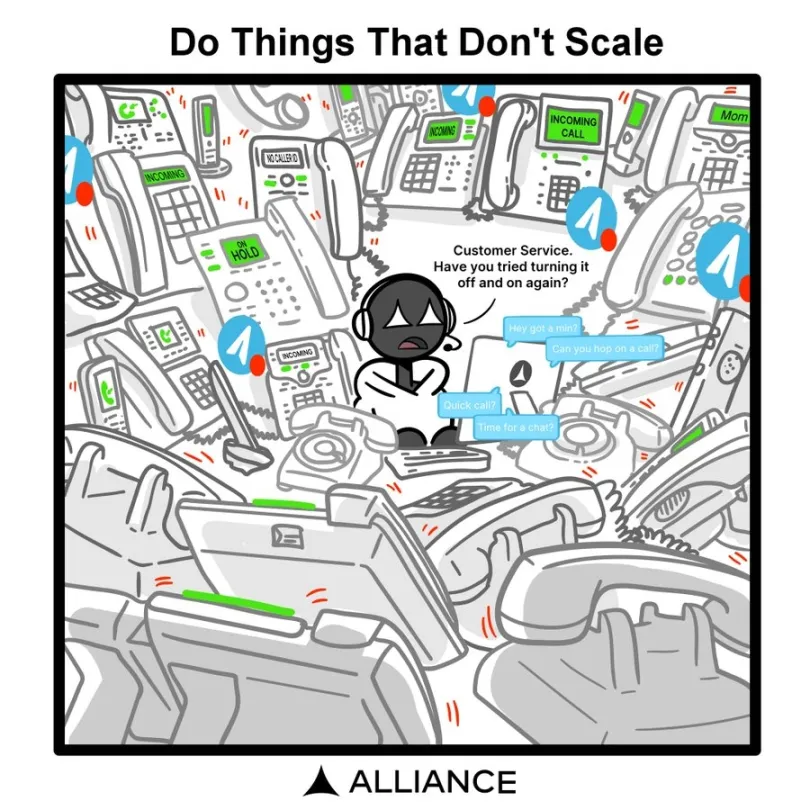20 Lessons for Crypto Founders: Start with Small Problems
Start with Small Problems
Instead of targeting a massive market from the outset, focus on solving a specific, smaller problem. This approach often contrasts with VC advice, which tends to emphasize large market opportunities. By concentrating on issues faced by a smaller user group, you can gain firsthand experience with the challenges they encounter while using crypto products. Engage with various new products to understand daily user pain points and identify actionable problems that truly need addressing.
Avoid Consensus
Steer clear of chasing ideas that are widely regarded as the next big trend. When a concept becomes mainstream, the market is often saturated. For instance, Polymarket demonstrated the potential of prediction markets, but now many teams are competing in that space. The best time to innovate is when only a few players are active. Focus on less explored areas to create unique value propositions with ample room for experimentation.

Build for a Small Core Group
Identify a small group of enthusiastic early adopters—around 25 to 50 users—who are genuinely invested in the problem you’re solving. By prioritizing their needs, you can build a strong foundation and foster real supporters. Their feedback will be invaluable for rapid iterations and improvements, allowing your user base to grow organically through recommendations.

Validate Your Hypotheses with an MVP
Before investing significant resources, use a Minimum Viable Product (MVP) to test your core hypotheses. This simplified version should address the primary pain point you’ve identified, providing enough insight to decide whether to double down or pivot. An MVP allows for quicker user feedback and can reveal unexpected insights, helping you stay ahead of competitors.
Launch Your Idea Within 30 Days
Timeliness is crucial. Aim to develop and launch your MVP within 30 days to harness the momentum of your idea and start gathering user data promptly. This rapid deployment compels you to focus on essential features and avoid the pitfalls of over-planning.
Do Non-Scalable Things
In the early stages, personalized interactions are more important than building a full product. Engage directly with users, handle customer support personally, and manually execute processes that you’ll automate later. These non-scalable efforts will help you form strong relationships with early users and deepen your understanding of their needs.

Avoid Overbuilding; Use Existing Tools
Refrain from starting from scratch. For crypto entrepreneurs, leveraging existing products is often more effective than creating core infrastructure. For example, use established automated market makers (AMMs) like Uniswap instead of developing your own. This approach saves resources and allows you to refine your core offering.
Recruit Users One by One
When building your initial user base, personalized outreach is key. Contact potential users individually through email, social media, or forums. This method allows for meaningful interactions and precise feedback about your product.
Continuously Seek Feedback and Iterate
Maintain ongoing conversations with your users. Regular feedback can provide insights you might not have considered, allowing you to iteratively improve your product to meet evolving user needs.
Interpret Feedback Judiciously
While user feedback is essential, be cautious in how you interpret it. Users may struggle to articulate their needs or suggest ideas that diverge from your product vision. Use your judgment to discern underlying issues and address them in line with your product direction.
Achieve Stability with 50 to 100 Daily Active Users
Aim for steady growth in daily active users (DAU), targeting an initial range of 50 to 100. This level of engagement indicates that your product is gaining traction and becoming part of users’ daily routines. Monitor retention and engagement metrics to build sustainable growth.
Refine Your Business Model
Once you have a stable user base, focus on profitability. Develop a clear business model that outlines how your startup will generate revenue, whether through transaction fees, premium features, or token sales. A well-defined model is crucial for attracting investors and ensuring long-term viability.
Dive Deep into Data for Growth Insights
Data is your ally. Analyze it to understand what drives user acquisition, engagement, and retention. Identify key performance indicators (KPIs) that align with your business objectives and use this information to make informed decisions about marketing strategies and product features.
Be Persistent: Reach Out Through Various Channels
Persistence pays off. Don’t hesitate to contact potential users, partners, or investors multiple times. Use a mix of email, direct messaging, group chats, and social media to broaden your reach. Networking and promotion are essential for entrepreneurial success.
Celebrate Small Wins and Take Breaks
Every milestone, no matter how small, deserves recognition. Celebrating achievements, whether launching a new feature or hitting a user benchmark, boosts team morale. Additionally, taking breaks helps prevent burnout and maintains long-term productivity.
Work Hard
There’s no substitute for hard work. Building a successful startup requires dedication, long hours, and a willingness to go the extra mile. Consider how much time you’d be willing to invest compared to your competitors; this mindset can inspire smarter, more effective work.
Protect Your Equity
Be cautious with equity distribution in the early stages. While it may be tempting to offer large shares for funding or talent, retaining control is essential for shaping your company’s future. Explore alternative incentives and negotiate terms that align with your long-term vision.
Small Financing Teaches Resourcefulness
Securing moderate funding forces you to prioritize core issues and learn to manage resources efficiently. In the early stages, aim to raise between $500,000 and $1 million. A streamlined budget encourages creative solutions and builds a more sustainable business model.
Embrace Frugality
Adopt a frugal mindset in all aspects of your startup. Review every expense, avoid unnecessary operational costs, and focus funds on areas that directly contribute to growth. Frugality extends your runway and provides flexibility in facing unexpected challenges.
Keep Your Team Lean
Be deliberate about team expansion. Each new hire should fill a critical role that directly impacts your company’s success. A lean team is more agile, easier to manage, and less susceptible to the complexities that large startups face. Maintaining a small team helps you quickly pivot and preserve a strong company culture.